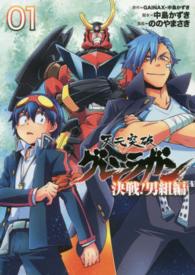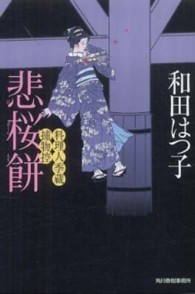- ホーム
- > 洋書
- > 英文書
- > Business / Economics
Full Description
How to use brands to gain and sustain competitive advantage Companies today face a dilemma in marketing. The tried-and-true formulas to create sales and market share behind brands are becoming irrelevant and losing traction with consumers. In this book, Gerzema and LeBar offer credible evidence--drawn from a detailed analysis of a decade's worth of brand and financial data using Y&R's Brand Asset Valuator (BAV), the largest database of brands in the world--that business is riding on yet another bubble that is ready to burst--a brand bubble. While most managers still see metrics like trust and awareness as the backbone of how brands are built, Gerzema asserts they're dead wrong--these metrics do not add to increased asset value. In fact, by following them, they actually hasten the declining value of their brands. Using a five-stage model, The Brand Bubble reveals how today's successful brands--and tomorrow's--have an insatiable appetite for creativity and change. These brands offer consumers a palpable sense of movement and direction thanks to a powerful "energized differentiation." Gerzema reveals how brands with energized differentiation achieve better financial performance than traditional brands have. Plus, Gerzema helps readers develop energized differentiation in their own brands, creating consumer-centric and sustainable organizations.
Contents
Foreword By Peter Stringham, CEO, Young & Rubicam Group. PART ONE: INTRODUCTION. 1 Tulipmania and Infl ated Brands. 2 Can You Say Irresistible ? 3 Wall Street, Meet Main Street. 4 The Postmodern Craving for Creativity. 5 Welcome to ConsumerLand. PART TWO: APPLICATION. 6 Stage One Exploration: Performing an Energy Audit. Case study: LEGO Play Well. 7 Stage Two Distillation: Identifying the Energy Core. Case study: Virgin Atlantic Brilliant Basics, Magic Touches. 8 Stage Three Ignition: Creating an Energized Value Chain. Case study: Xerox The Energy Inside. 9 Stage Four Fusion: Becoming an Energy-Driven Enterprise. Case study: Mumbai Tiffi n Box Suppliers Human Energy. 10 Stage Five Renewal: Active Listening and Constant Refreshing of Brand Meaning. Case study: UNIQLO Seeing Farther. Epilogue: A Brand May Be Famous, But Is It Creating Return for Shareholders? Notes. Acknowledgments. The Authors. Index.







